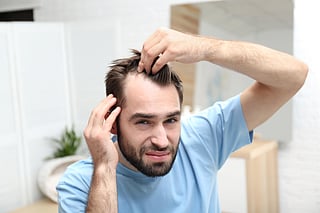Unfortunately, there isn’t a one-size-fits-all instant cure for male pattern baldness.
One popular male pattern baldness medication is called minoxidil, also known as Rogaine. At this time, minoxidil and finasteride (Propecia) are the only medications you can get to treat pattern baldness that are approved by the U.S. Food and Drug Administration.
There are also surgical options, like a hair transplant. That’s when your health care provider takes skin that has healthy hair and moves it to your scalp. You may need more than one transplant before your hair looks natural.


